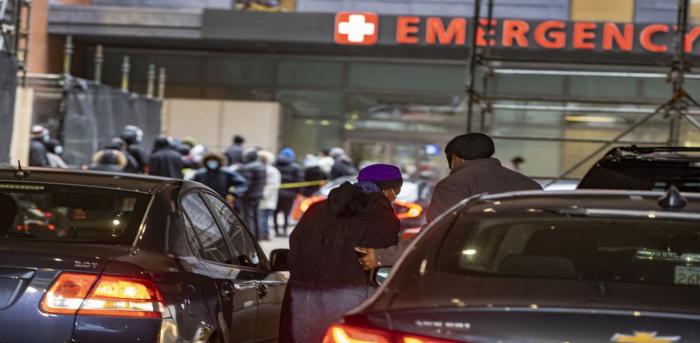New survey reveals stark racial disparities among those who rely on ERs for health care

DATE: November 30, 2022

Black and Hispanic residents were far more likely than white residents to visit hospital emergency departments for care, even before the pandemic, according to a new state analysis released Wednesday.
The new survey and report, published on Wednesday by the Center for Health Information and Analysis, found that after controlling for demographic characteristics such as overall health as well as insurance coverage, Black and Hispanic residents in Massachusetts were 60% and 110% more likely, respectively, to visit the emergency department for a non-emergency condition at their most recent visit, or to have had three or more ED visits in the last year.
The analysis underscores the degree to which racial disparities underly emergency department use, as ERs statewide buckle from hospital-wide capacity constraints.
“Understanding the causes and challenges of potential ED reliance is a crucial first step toward designing effective interventions to mitigate the use of the ED for non-emergency conditions for all patients,” the report states.
The findings underscore the numerous issues people face accessing non-ED care, from language barriers, to trouble using online tools like telehealth, to finding convenient urgent care centers in their neighborhoods, said Dr. Elsie Taveras, chief community health and health equity officer at Mass General Brigham, and the executive director of the Kraft Center for Community Health, who was not involved in the new research.
“It comes back to that question of how easy do we make access to community-based care in the communities where there is an overrepresentation of people of color living there,” Taveras said.
The findings aren’t just statistics to Taveras, but reflect her lived experience growing up in Washington Heights in New York City. She said that her immigrant family received much of its care in the emergency department of a large academic medical center nearby. As native Spanish speakers, they struggled to access community-based primary and urgent care, which was only available in English.
“We have made some improvements,” she said. “Forty years ago there wasn’t the proliferation of community health centers like there is now. But even with them, the availability and hours of urgent care and even office hours is limited. Especially now with the health care system at a breaking point with workforce shortages, it’s even more challenging.”
Massachusetts researchers have long sought to understand why some individuals use emergency departments for non-emergency conditions or become overly reliant on ERs for their medical care. The overuse of emergency departments drives up health care costs and strains the health care system, according to the report.
The phenomenon is not uncommon. According to the CHIA report — which looked at surveys conducted in 2015, 2017 and 2019 — 14% of respondents reported reliance on the ED, which if extrapolated would represent nearly one million Massachusetts residents.
Previous reports have highlighted the disparities in emergency department use. But researchers wanted to account for things like demographic and socioeconomic characteristics, health status, insurance coverage and how well patients could access non-ED care.
In the new report, they found that some low income individuals were 21% more likely to have frequent visits to the ED, compared with higher income individuals. They also found that residents from families where the highest level of education was a high school diploma were 110%more likely to demonstrate potential ED reliance compared to families where the highest level of education was at least a four-year degree.
Additionally, when controlling for racial and ethnic differences and other factors in the model, residents who said they were in fair or poor health, and who were limited in their activities because of a physical, mental or emotional problem were 190% more likely to rely on the ED.
“These gaps may reflect a greater actual need for more frequent ED services and/or decreased access to preventive medical care or lack of access to same-day/after-hours appointments among certain residents — e.g., those with chronic conditions,” the report said.
Taveras noted that community settings in particular lack specialty care, which is particularly challenging for those with chronic conditions.
Residents who said they were unable to get an appointment with a doctor’s office or clinic as soon as was needed were 90% more likely to report reliance on the ED, however being uninsured or being unable to enroll as a new patient in a doctor’s office or clinic was not associated with higher emergency department use.
Taveras said the findings showed the level of structural change needed to address the disparities.
“One of the biggest takeaways [is] we need to support and continue to build the robust community health infrastructure we have in Massachusetts for primary, urgent and specialty care for patients with chronic diseases,” Taveras said. “We also have to pay attention to the structural issues that also produce barriers to accessing any system.”
By Jessica Bartlett, Boston Globe Staff, Wednesday, November 30, 2022
